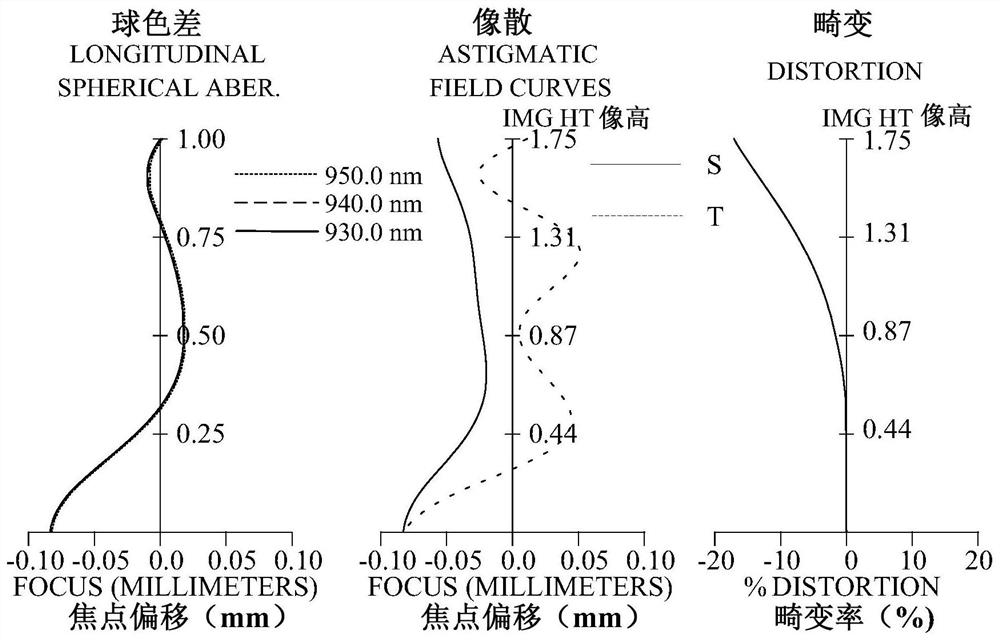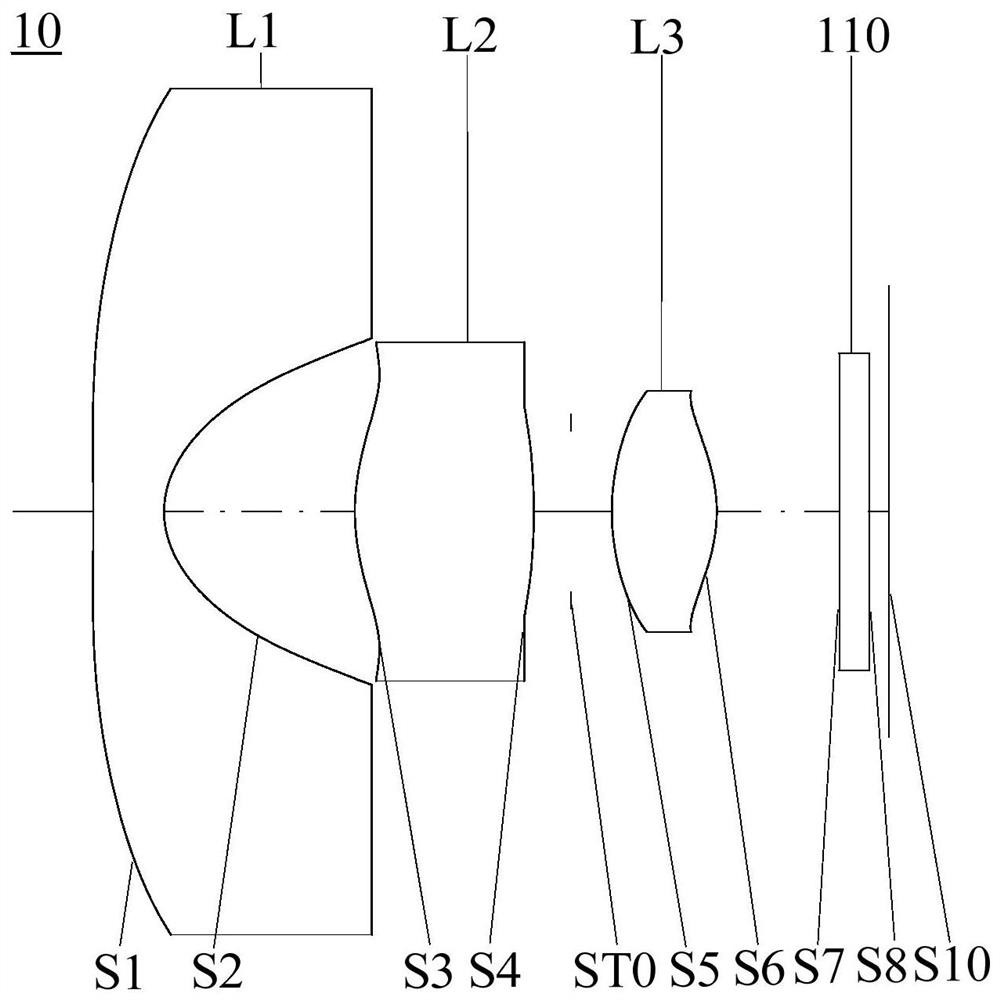Image capturing lens, recognition module and electronic device
A lens and lens technology, applied in optical components, optics, instruments, etc., can solve the problem of increasing the field of view of the lens
- Summary
- Abstract
- Description
- Claims
- Application Information
AI Technical Summary
Problems solved by technology
Method used
Image
Examples
no. 1 example
[0095] Such as figure 1 In the shown first embodiment, the image taking lens 10 sequentially includes a first lens L1 with negative refractive power, a second lens L2 with positive refractive power, a stop ST0, and a lens with positive refractive power from the object side to the image side. The third lens L3 and the infrared bandpass filter 110 . in addition, figure 2 It is the spherical aberration diagram (mm), the astigmatism diagram (mm) and the distortion diagram (%) of the imaging lens 10 in the first embodiment, wherein the astigmatism diagram and the distortion diagram are reference wavelengths (see notes in Table 1) The data graph below.
[0096] Wherein, the object side S1 of the first lens L1 is concave at the optical axis, the image side S2 of the first lens L1 is concave at the optical axis; the object side S1 of the first lens L1 is convex at the circumference, and the first lens L1 The image side S2 is concave at the circumference. The object side S3 of the...
no. 2 example
[0131] Such as image 3 In the shown second embodiment, the image taking lens 10 sequentially includes a first lens L1 with negative refractive power, a second lens L2 with positive refractive power, a stop ST0, and a lens with positive refractive power from the object side to the image side. The third lens L3 and the infrared bandpass filter 110 . in addition, Figure 4 It is the spherical aberration diagram (mm), the astigmatism diagram (mm) and the distortion diagram (%) of the imaging lens 10 in the second embodiment, wherein the astigmatism diagram and the distortion diagram are data diagrams at the reference wavelength.
[0132] Wherein, the object side S1 of the first lens L1 is concave at the optical axis, the image side S2 of the first lens L1 is concave at the optical axis; the object side S1 of the first lens L1 is convex at the circumference, and the first lens L1 The image side S2 is concave at the circumference. The object side S3 of the second lens L2 is a co...
no. 3 example
[0144] Such as Figure 5 In the third embodiment shown, the imaging lens 10 sequentially includes a first lens L1 with negative refractive power, a second lens L2 with positive refractive power, a stop ST0, and a lens with positive refractive power from the object side to the image side. The third lens L3 and the infrared bandpass filter 110 . in addition, Figure 6 It is the spherical aberration diagram (mm), the astigmatism diagram (mm) and the distortion diagram (%) of the imaging lens 10 in the third embodiment, wherein the astigmatism diagram and the distortion diagram are data diagrams at the reference wavelength.
[0145] Wherein, the object side S1 of the first lens L1 is concave at the optical axis, the image side S2 of the first lens L1 is concave at the optical axis; the object side S1 of the first lens L1 is convex at the circumference, and the first lens L1 The image side S2 is concave at the circumference. The object side S3 of the second lens L2 is a convex s...
PUM
 Login to View More
Login to View More Abstract
Description
Claims
Application Information
 Login to View More
Login to View More - R&D
- Intellectual Property
- Life Sciences
- Materials
- Tech Scout
- Unparalleled Data Quality
- Higher Quality Content
- 60% Fewer Hallucinations
Browse by: Latest US Patents, China's latest patents, Technical Efficacy Thesaurus, Application Domain, Technology Topic, Popular Technical Reports.
© 2025 PatSnap. All rights reserved.Legal|Privacy policy|Modern Slavery Act Transparency Statement|Sitemap|About US| Contact US: help@patsnap.com



